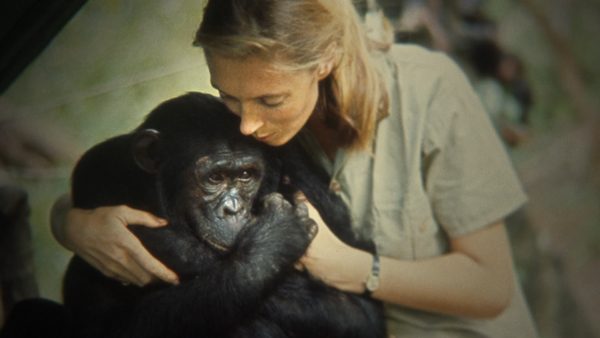2018 School Spending Survey Report
'Jane,' the New Documentary on the Trailblazing Primatologist
Featuring never-before-seen footage of the early days of Jane Goodall’s landmark research and discoveries.

Jane Goodall in the early 1960s, as seen in Jane (Jane Goodall Institute)
This revelatory look at primatologist and conservationist Jane Goodall, simply titled Jane, significantly adds to the canon of material based on her life and landmark research. The you-are-there footage culled from more than 100 hours of never-before-seen film from the National Geographic archives makes this documentary remarkable. (The movie recently had its North American premiere at the New York Film Festival, before its national theatrical release, beginning on October 20.) The captivating 16mm color visuals are just one reason the film stands out as an excellent supplement to the Goodall goldmine. Directed by Brett Morgen, the new movie is a primary source of her then-revolutionary examination of the highly intelligent and sociable primates. Additionally, not many nonfiction films can boast of having a grand but unimposing score by Philip Glass. In 1957, Goodall, then a 26-year-old secretary with no prior training or degree, applied for a research position under archaeologist and paleontologist Louis Leakey to meticulously record chimpanzee behavior in their habitat. According to her, she had to fulfill one job requirement: “monumental patience.” Because she was a single woman, she was also required to have a chaperone, and her mother volunteered. Arriving in 1960, they set up camp in Gombe Stream National Park in northwestern Tanzania, shortly before the country gained its independence from Britain in 1961. Venturing into the hills alone from dusk to dawn, it took Goodall five months until she was finally accepted by the primates to witness a community grooming session. Viewers who have read about her encounters with Flo, the top female in the community; Goliath, the top-ranked male; the gentle David Graybeard; and the aloof MacGregor will become armchair observers to the small-to-groundbreaking moments when she, day by day, earned their trust. So much so that the chimpanzees were perfectly at home in her camp in search for bananas, a quest that turned into an all-out rampage. With a wink, she refers to them as “unconscionable thieves.” Morgen builds the film’s structure largely around excerpts from Goodall’s audiobook narration of her 1999 bestseller Reason for Hope: A Spiritual Journey and a candid talking-head interview from her home base of Dar es Saleem, Tanzania. The forthright personalities of the scene-stealing simians and their thinking and reasoning skills are on full display as David Graybeard adapts a twig into a tool for digging up termites—an example of object modification. The chimpanzees are adorable and, as seen here, capable of violence. Jane covers a wide breadth of her findings, including disturbing evidence from the mid-1960s of a civil war in an ape community after the death of a maternal leader. It’s never clear who the cameraperson is for the earliest archival footage. However, at the halfway mark, Goodall appears more relaxed and playful in her interactions with the person behind the camera: Dutch wildlife filmmaker Hugo van Lawick, who arrived in 1962 to document her work for National Geographic. Based on what was filmed, it will be no surprise to learn that the two married in 1964. The film contains yet another bonus, the inclusion of van Lawick's stunning cinematography of life on the Serengeti plains, where he and Goodall raised their son, known as Grub, for a number of years. The second half covers the marriage, the bringing up of Grub, the push-and-pull of her and Hugo’s separate (and demanding) careers, and their 1974 divorce. With little doubt, the chimpanzees will be the main draw for many viewers, but they share the spotlight with Goodall herself, who has a gracious, forthcoming presence that’s in contrast to the solitary, introspective figure of more than 50 years ago. Much of her biography will already be familiar to readers of Patrick McDonnell’s Me…Jane. The call for conservation has rarely looked so captivating. After a deluge of films focused on the environment, this may be the most effective and eloquent in some time. The first half would especially serve as an excellent resource as an introduction to Goodall, the scientific method, and animal studies for grades four and up. Directed by Brett Morgen 90 min.RELATED
RECOMMENDED
CAREERS
The job outlook in 2030: Librarians will be in demand
CAREERS
The job outlook in 2030: Librarians will be in demand
ALREADY A SUBSCRIBER? LOG IN
We are currently offering this content for free. Sign up now to activate your personal profile, where you can save articles for future viewing






Add Comment :-
Be the first reader to comment.
Comment Policy:
Comment should not be empty !!!